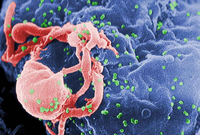








Gene therapy is a rapidly growing field of medicine in which genes are introduced into the body to treat diseases. Genes control heredity and provide the basic biological code for determining a cell's specific functions. Gene therapy seeks to provide genes that correct or supplant the disease-controlling functions of cells that are not, in essence, doing their job. Somatic gene therapy introduces therapeutic genes at the tissue or cellular level to treat a specific individual. Germ-line gene therapy inserts genes into reproductive cells or possibly into embryos to correct genetic defects that could be passed on to future generations. Initially conceived as an approach for treating inherited diseases, like cystic fibrosis and Huntington's disease, the scope of potential gene therapies has grown to include treatments for cancers, arthritis, and infectious diseases. Although gene therapy testing in humans has advanced rapidly, many questions surround its use. For example, some scientists are concerned that the therapeutic genes themselves may cause disease.
Paul Zamecnik,who was born in Cleveland,became interested in how cells regulate growth, and hence, in protein chemistry. He was awarded a Finney-Howell Fellowship and a Moseley Traveling Fellowship to go to the Carlsberg Laboratory in Copenhagen where he worked with Dr. Kai Linderstrom-Lang. His planned time in Copenhagen was cut short because of World War II—the Germans occupied Denmark from April 1940—and he and his wife, Mary Connor, returned to Boston where he became an Assistant Physician at the Huntington Memorial Hospital, studying the toxic factors involved in traumatic shock for a wartime Office of Scientific Research and Development project led by Huntington director Joseph Charles Aub. After a year in New York at the Rockefeller Institute for Medical Research studying protein synthesis with Max Bergmann, he returned to Harvard in 1942 to join the Faculty of Medicine at Harvard Medical School where he became Instructor and then Professor of Medicine, where he served until retiring as the Collis P. Huntington Professor of Oncologic Medicine, Emeritus in 1979.
After retiring from Harvard Medical School he continued his research at the Worcester Foundation for Biomedical Research with his former colleague Dr. Hoagland. When the foundation merged with the University of Massachusetts Medical School in 1997, Dr. Zamecnik moved his laboratory to MGH, where he continued to work until several weeks before his death.
Paul Zamecnik is generally regarded as the founder of antisense therapy.